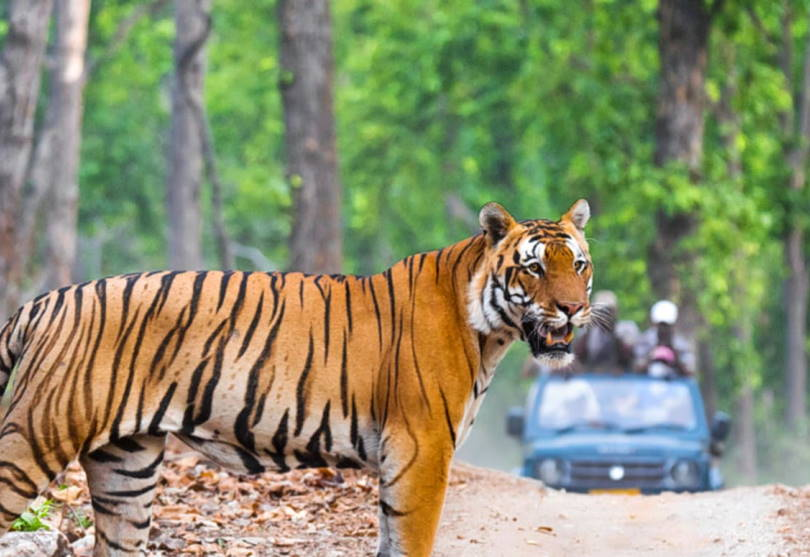Description

Copyright infringement not intended
Picture Courtesy: https://tadvai.feriadoresorts.com/unwind-in-eturnagaram-wildlife-sanctuary/
Context: Telangana is currently facing forest fires in the Tadvai region of the Eturnagaram Wildlife Sanctuary in Mulugu and the Amrabad Tiger Reserve.
Details
- Telangana has a specific dry season, which relates to the ongoing wildfires. This period, which normally lasts from March to June, is characterised by rising temperatures and decreased precipitation, producing ideal conditions for wildfires to spread.
- Forest officials rely on a technological approach to combat fires. They utilise real-time fire alerts from the Forest Survey of India based on ground heat mapping. These alerts are then verified using GIS (Geographic Information System) technology, which provides a layered view of geographical data. This allows officials to pinpoint the location of fires and dispatch teams effectively.
|
Causes of Fires
●Human activity is a major contributor to the wildfires. Campfires left unattended by people fishing in the nearby river can easily spark fires.
●Some traditional practices contribute to the problem. The Chenchu tribes, who inhabit the region, sometimes resort to burning trees to collect mahua flowers more easily. These flowers are used for making country liquor or for medicinal purposes.
|
About Eturnagaram Wildlife Sanctuary
- Established in 1952, Eturnagaram Wildlife Sanctuary is one of Telangana's oldest sanctuaries, recognized for its ecological importance.
- The Dayyam Vagu River meanders through the sanctuary, dividing it into two distinct sections.
- The Godavari River passes through the sanctuary.
- It is dominated by deciduous teak and complemented by axlewood, palas, tendu, and dhobi trees. These create a layered canopy, providing habitat for various animals.
- Tigers, panthers, gaurs, sambar deer, spotted deer, nilgai, blackbucks, jackals, foxes, mongoose, and rodents are found in the sanctuary.
- Eagles, hawks, owls, pheasants, hornbills, and parakeets are among the many birds found in the sanctuary.
- Snakes, lizards, and reptiles like the monitor lizard and Indian rock python contribute to the ecological balance by controlling insect and rodent populations.
- Indigenous Gond and Pardhan tribes coexist with the sanctuary, they play a vital role in conservation efforts and sustainably utilise forest resources for food, medicine, and other necessities.
- Bogatha Waterfall located in the core area of the Sanctuary.
- The biennial festival of Sammakka Saralamma Jatara, a tribal festival that commemorates the martyrdom of tribal warriors Sammakka and Sarakka is held in the sanctuary.

Must Read Articles:
FOREST FIRES IN HIMALAYAS: https://www.iasgyan.in/daily-current-affairs/forest-fires-in-himalayas#:~:text=According%20to%20the%20Intergovernmental%20Panel,CO2%2C%20exacerbating%20climate%20change%20impacts.
|
PRACTICE QUESTION
Q. Historically, fires have played a natural role in some ecosystems, promoting biodiversity. However, climate change is altering weather patterns and increasing fire risk. How to develop forest management strategies that balance the need for fire suppression with the ecological benefits of controlled burns, particularly in a changing climate?
|












